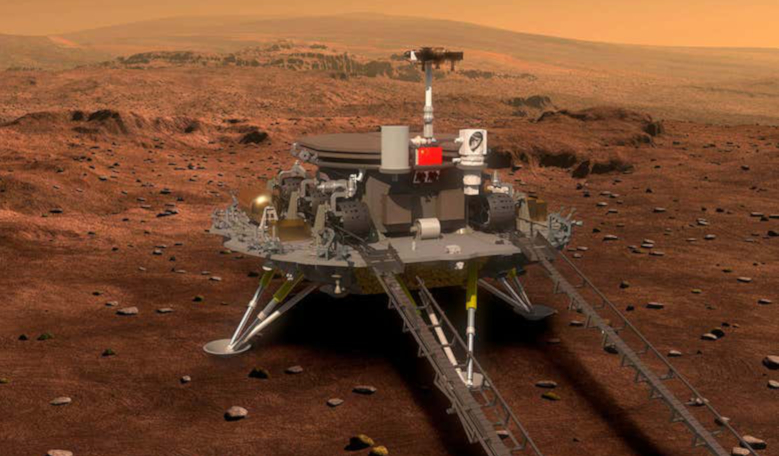Reports which suggested that China was getting ready to land its rover, Zhurong, on Mars during a descent window which started today, have been confirmed by the country's space agency.
"According to the current flight situation, the Tianwen-1 probe plans to choose an opportunity to land on the Martian Utopia Plain from the early morning of May 15 to May 19, Beijing time," CNSA say in a statement on their website.
Rumours had started circulating yesterday that the descent was due to take place imminently after Ye Peijian, the chief adviser of Interplanetary Exploration at CAST – China Association for Science and Technology – let it be known at a conference that the capsule containing Zhurong will begin its “seven minutes of terror” at round 11pm UTC on 14 May.
The seven minutes of terror – faced recently by NASA’s Perservance rover in February – describes the minutes anxious mission staff back on Earth have to wait before they learn whether their multi-million dollar mission has survived the tumultuous plummet to the planet’s surface or not.
At about 1.8 metres tall and weighing 240 kilograms, Zhurong, named after an ancient fire god, is smaller than NASA’s Curiosity rover but slightly larger than the now-defunct Spirit and Opportunity rovers.
It is powered by solar panels and is designed to study Mars’ climate, magnetic field, geological structure, and surface composition.
Providing the landing is a success, Zhurong has a minimum life expectancy of 90 Martian days.
China’s Tianwen-1 mission arrived at Mars on 10 February, 2021. After completing a complicated manoeuvre to enter a temporary parking orbit two weeks later, it has been circling the planet ever since.
During this time, it has been preparing for the descent of the country’s first-ever Mars lander and rover by mapping the surface below.
The lander and the rover are set to drop from the orbiter as a whole and are expected to touch down in Utopia Planitia, the same region where NASA’s Viking 2 lander touched down back in 1976.
The region is the largest recognised impact basin on Mars and in the Solar System with an estimated diameter of 3300 kilometres.
Utopia Planitia is packed with features such as polygonal cracked terrain and oddly-shaped, rimless pits called “scalloped depressions” that are suggestive of subsurface ice or permafrost.
Past studies by scientists using SHARAD, which stands for SHAllow RADar, onboard NASA’s Mars Reconnaissance Orbiter, have suggested that a volume of water ice around 1.2 times the volume of Lake Superior in the US could be present in Utopia Planitia’s subsurface.
This could be confirmed by Zhurong, as along with cameras, a magnetic field detector and a weather station, the rover is also equipped with a ground-penetrating radar to peer below the surface.
The same Chinese space watchers who revealed the impending descent also report that Zhurong will begin exploration on 22 May, though this has yet to be confirmed by China’s space agency.











